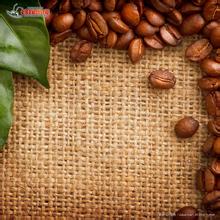Introduction to the manor of Ethiopian coffee bean flavor description variety area treatment method
Introduction to the manor of Ethiopian coffee bean flavor description variety area treatment method
Ethiopians use a special clay pot to make coffee. Before making coffee, the pot is heated with hot coal. When the pottery pot is heated, the hostess first cleans the coffee beans to remove the parchment-like endocarp and silver skin from the surface of the beans. Then, the hostess will add a little rosin to the fire, incense the whole room, then take out an iron pan shaped like a pan, put it on the fire, pour in the washed coffee beans and stir-fry with a shovel. After a few minutes, the coffee beans gradually show a light brown cinnamon color, followed by a crackling sound-usually divided into "one explosion" and "two explosions". Not long after the explosion, the coffee beans turn dark brown. At this time, the coffee beans are poured into a stone mortar, mashed with a pestle and ground into a powder as fine as possible. Grind the coffee powder, pour it into a warm clay pot, add spices such as cardamom and cinnamon, or add a herb called Adam's Health to boil together.
Although the Ethiopian Yirgacheffe coffee is petite, it is gentle and delicate and sweet. As the hometown of coffee, thousands of years of planting history and processing tradition in Ethiopia have created high-quality washed Arabica beans. Light baking has unique sweet aromas of lemon, flowers and honey, soft acidity and citrus flavours, fresh and bright Yegashifi coffee trees are planted by European monks and later transferred to farmers or cooperatives. Yega Xuefei is actually constructed by the surrounding coffee communities or cooperatives, including: Hafusha, Hama, Biloya.
These mountain villages are foggy, like spring all year round, with a gentle breeze in summer, cool but not hot, rain but not damp, and no cold damage in winter, giving birth to a unique regional flavor of citrus and flowers. Coffee trees are mostly planted in farmers' backyards or mixed with other crops in the field.
Even the official research unit of Ethiopia does not know how many Arabica subspecies there are in Ethiopia. The coffee cooperatives in this mountain are certainly different from those planted in another mountain, and even small farmers in the same region grow different varieties of coffee. It has been estimated that there are at least 2000 varieties of Ethiopian coffee and even more than 4500 kinds of coffee. Compared with the fat posture of Bourbon 'SL28', the main variety to the south of Kenya, or Tibica in Central and South America and Asia, Ethiopian beans look a little malnourished. But "beans" can't be seen. Ethiopian coffee has the highest citrus flavor in the world, whether it's instant coffee or freshly ground coffee.

Important Notice :
前街咖啡 FrontStreet Coffee has moved to new addredd:
FrontStreet Coffee Address: 315,Donghua East Road,GuangZhou
Tel:020 38364473
- Prev

Coffee Bean Variety El Salvador Pacamara Coffee Flavor description introduction of Grinding scale in Manor area
Coffee bean variety Pacamara coffee flavor description manor area grinding scale introduction coffee flavor and quality El Salvador is a producer of high-quality commercial Arabica beans, famous for strict and effective quality control. Since 2003, he has joined the COE competition. With excellent ancient coffee, it successfully entered the boutique coffee market.
- Next

Introduction of fine Sidamo water-washed sun-dried G1G2 coffee beans in Shaquiso, Kenya
Description of the flavor and taste of which coffee beans are produced in Shaqiso, Kenya. Ethiopia's Sidamo is a type of single origin, growing in Arabica coffee in Ethiopia's Sidamo province. Like coffee in most African countries, Ethiopian Sidamo is characterized by small gray beans, but characterized by its rich, spicy, wine or chocolate-like taste and floral aroma.
Related
- Detailed explanation of Jadeite planting Land in Panamanian Jadeite Manor introduction to the grading system of Jadeite competitive bidding, Red bid, Green bid and Rose Summer
- Story of Coffee planting in Brenka region of Costa Rica Stonehenge Manor anaerobic heavy honey treatment of flavor mouth
- What's on the barrel of Blue Mountain Coffee beans?
- Can American coffee also pull flowers? How to use hot American style to pull out a good-looking pattern?
- Can you make a cold extract with coffee beans? What is the right proportion for cold-extracted coffee formula?
- Indonesian PWN Gold Mandrine Coffee Origin Features Flavor How to Chong? Mandolin coffee is American.
- A brief introduction to the flavor characteristics of Brazilian yellow bourbon coffee beans
- What is the effect of different water quality on the flavor of cold-extracted coffee? What kind of water is best for brewing coffee?
- Why do you think of Rose Summer whenever you mention Panamanian coffee?
- Introduction to the characteristics of authentic blue mountain coffee bean producing areas? What is the CIB Coffee Authority in Jamaica?

